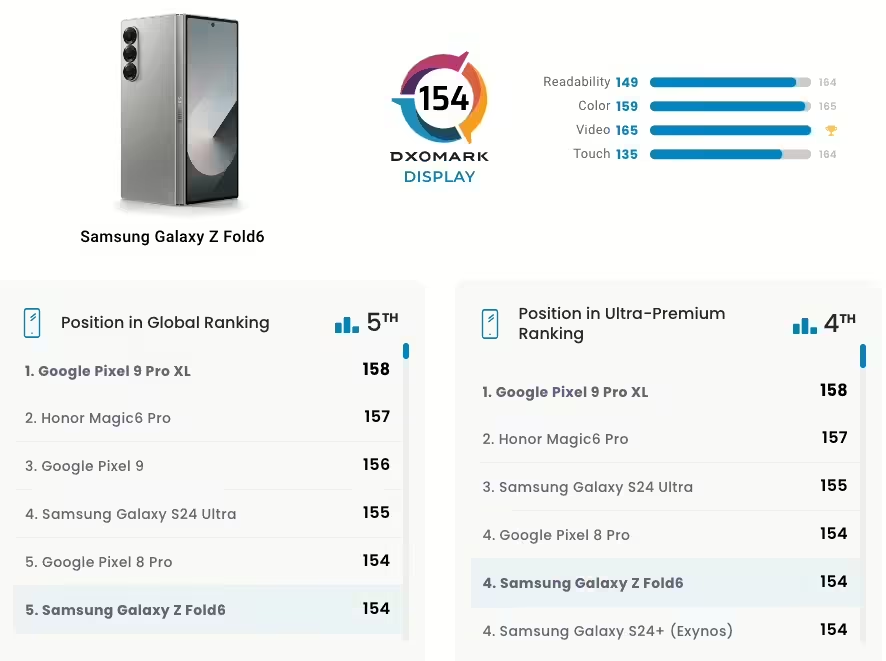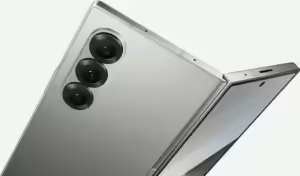The Samsung Galaxy Z Fold6 has received high praise in its Dxomark display tests, ranking 5th globally and 4th in the ultra-premium category of the company. According to the reviewers, the device’s display stands out in multiple areas, particularly for its exceptional video performance, achieving a top score in this category. The foldable screen is also praised for offering excellent brightness and color fidelity, especially in HDR10 content. It also performs well under various lighting conditions, with peak brightness reaching 2,564 cd/m², making it highly readable even in direct sunlight.
However, the Z Fold6 display has some drawbacks, including a visible crease, high reflectance, and frequent execution of unwanted touches. Despite these minor issues, the overall display performance is impressive, particularly in terms of readability, color accuracy, and touch responsiveness.

Are foldables ever going to be creaseless? It doesn’t seem like anyone has a real hard answer on that point. If you fold something enough times, any material, you will get a crease of some sort. That seems pretty obvious. Display makers want to reduce the visibility of that crease because the crease means that area of the screen is essentially being weakened or damaged, but they won’t be able to get rid of it forever. So, how much should a crease matter in display tests, and should there be a crease measurement by Dxomark?
It would be nice to know how much of a crease rather than the acknowledgement that there is a crease.I expect the crease as an inevitable part of the foldables experience but I would just like to know how bad it gets. And after what length of time does it start to grate on you? How long before a foldables’ crease really makes itself known and does it grow and crinkle over time or just stabilize at some point? It really would be nice to have a crease test.

